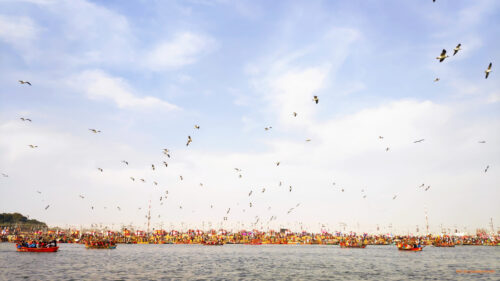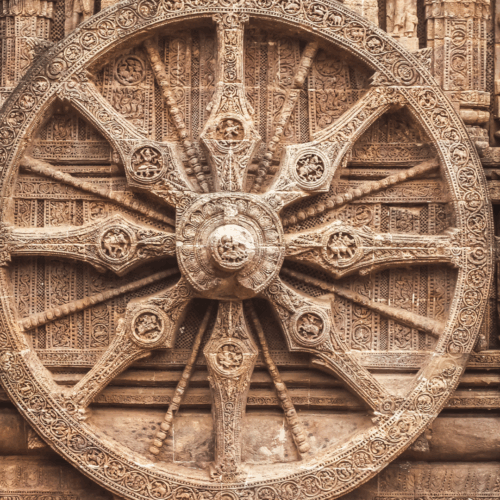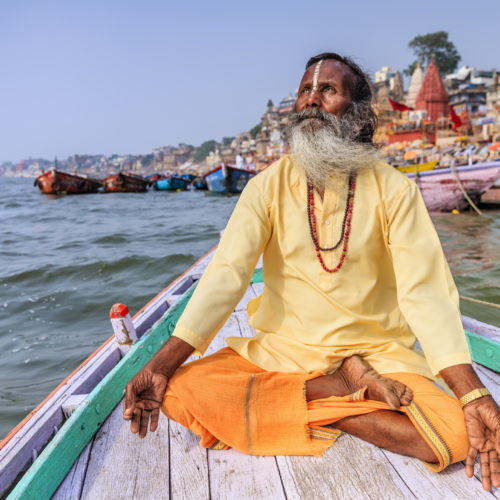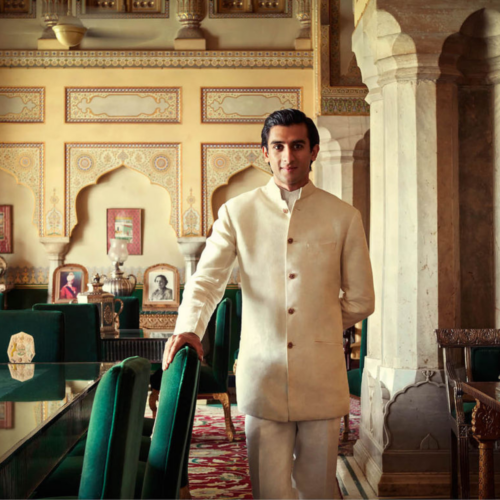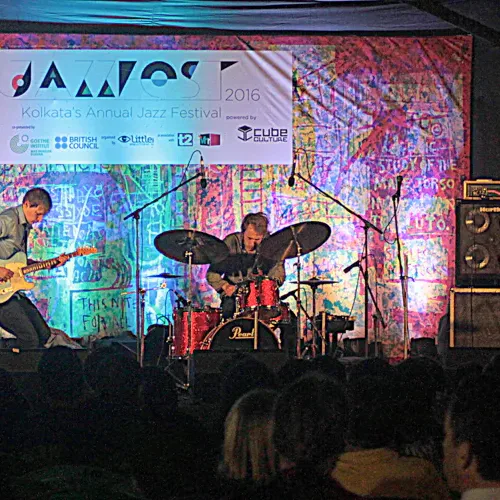The largest religious festival in the world, the Kumbh Mela is an extraordinary showcase of India’s spiritual and cultural tapestry, welcoming approximately 200 million attendees from all over the world to share in dynamic and mystical rituals and celebrations.
The Kumbh Mela unfolds in a cyclical rhythm, rotating among four sacred riverbanks, Haridwar, Ujjain, Nasik and Prayagraj, also known as Allahabad, over 12 years, the precise dates depending on the astrological alignment of the Sun, Moon and Jupiter. Among these gatherings, the Maha Kumbh Mela stands as the most significant, occurring every 12 years in Prayagraj revered as the holiest of holy sites nestled at the confluence of the Ganges, the Jumna and the mythical Sarasvati river.
The next Kumbh Mela, which will be the Maha Kumbh Mela, will take place from the 14th of January to the 26th of February, 2025. Here is everything you can expect from the festival.
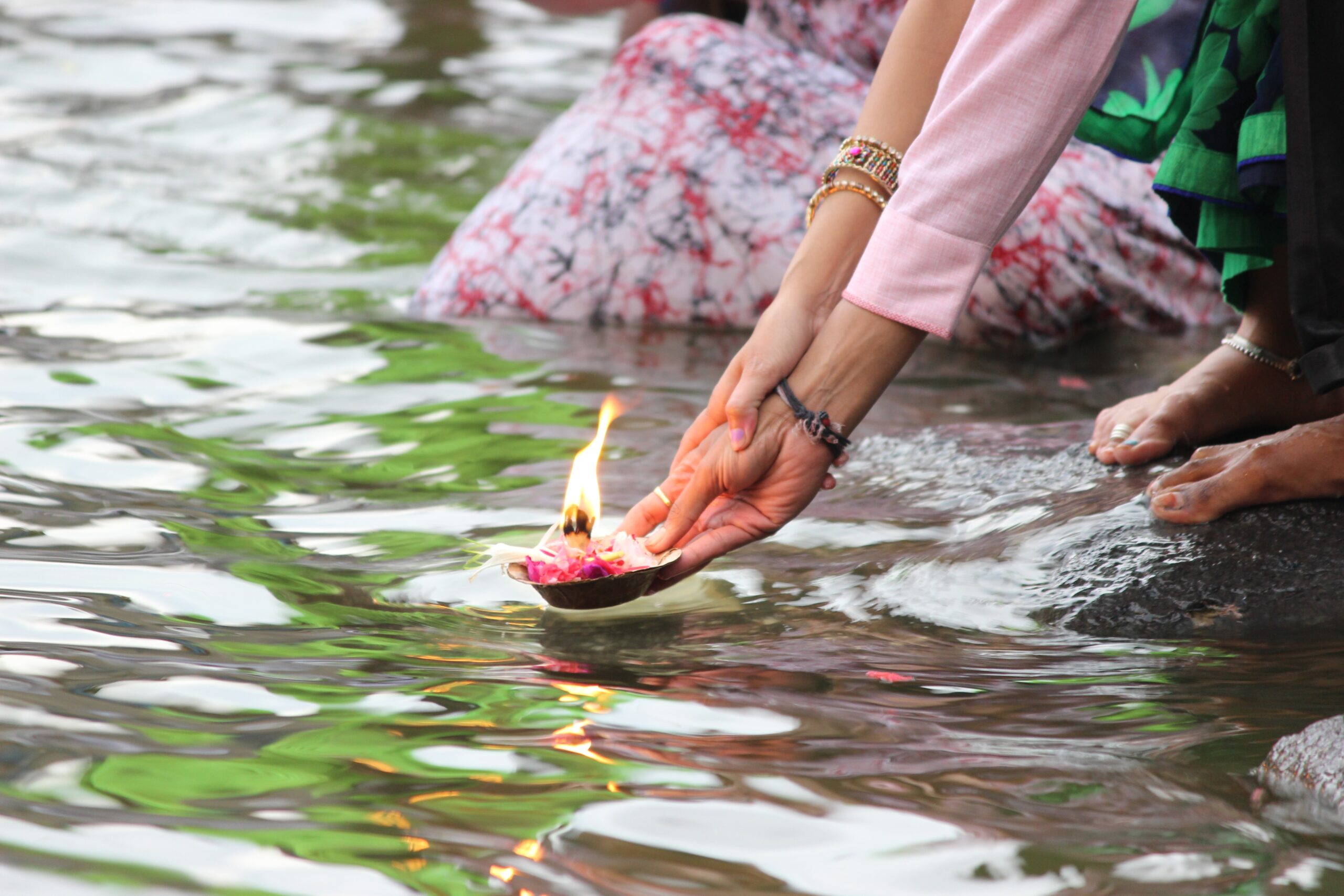
The myth behind the Kumbh Mela
It is said that a pot of amrita, the nectar of immortality, was created after the devas, gods, and asuras, demons, churned the ocean of creation. During the fierce battle that ensued over the possession of the pot, drops of the nectar fell on the Kumbh Mela’s four earthly sites. During each celebration at the four locations, it is said that the rivers transform into the primordial nectar, and pilgrims have the opportunity to bathe in it.
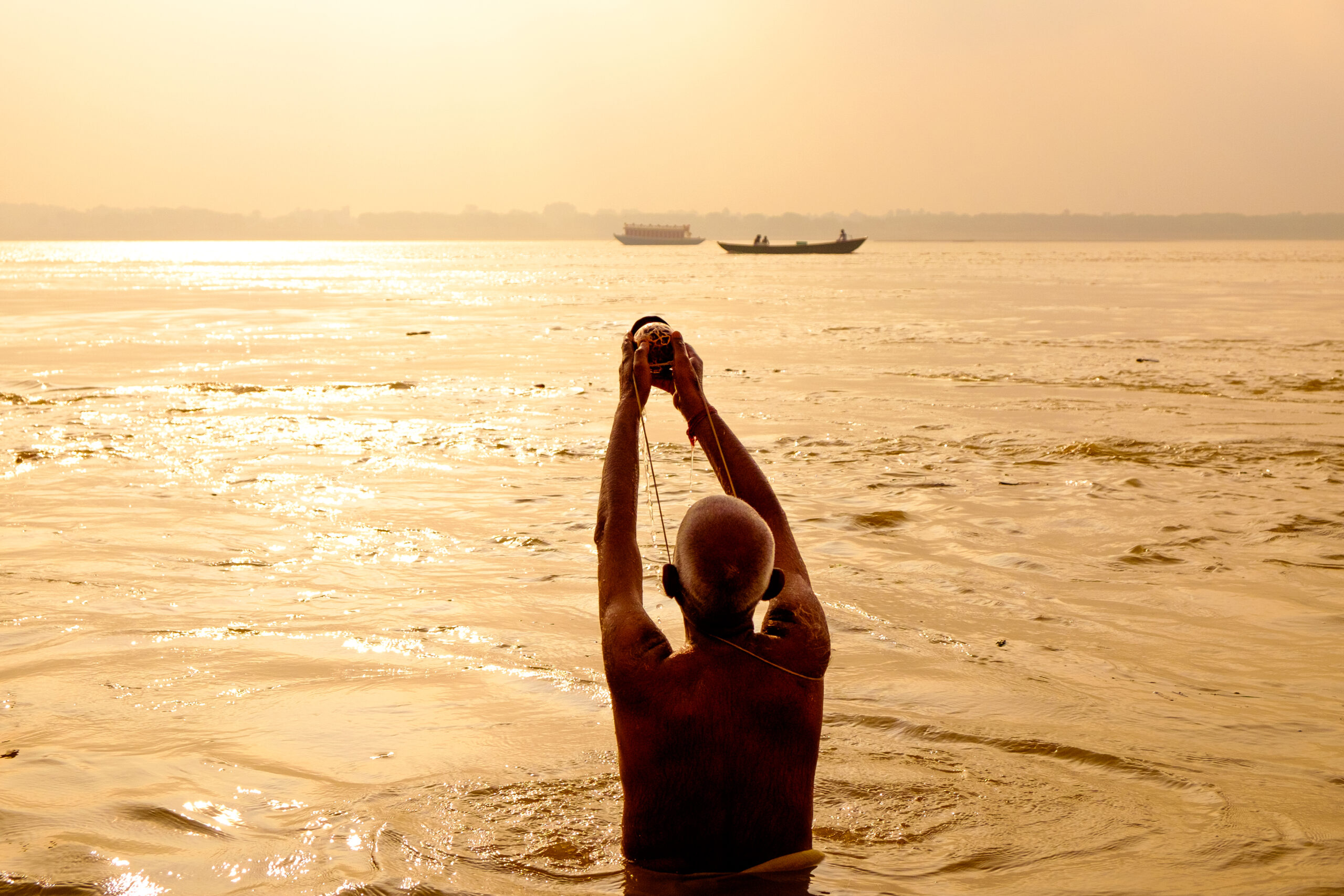
The holy bathings
The central ritual of the Kumbh Mela is the bathing. Those who participate believe that bathing in the sacred rivers will wash away their sins and release them from the process of rebirth.
These bathings take place every day, however, the most cherished days of bathing are known as Shahi Snan, or ‘Royal Baths’. On these days, the pilgrims will wait for the grand ceremonial dip of the mahants, the leaders of the thirteen akharas (Hindu monasteries). The occasions are marked by an impressive, vibrant procession where the musical sounds of horns and trumpets accompany elephants and horses marching beneath tremendous banners and flags, followed by the mahants, who are often naked, covered in ashes and draped in magnificent marigolds. Many of the mahants will also carry symbolic items associated with their sects such as tridents, staffs and flags.
During the 2025 Kumbh Mela, these will take place on the 14th and the 19th of January and the 3rd of February. There will also be important bathings on spiritually significant days including the 13th of January and the 4th, 12th and 26th of February.
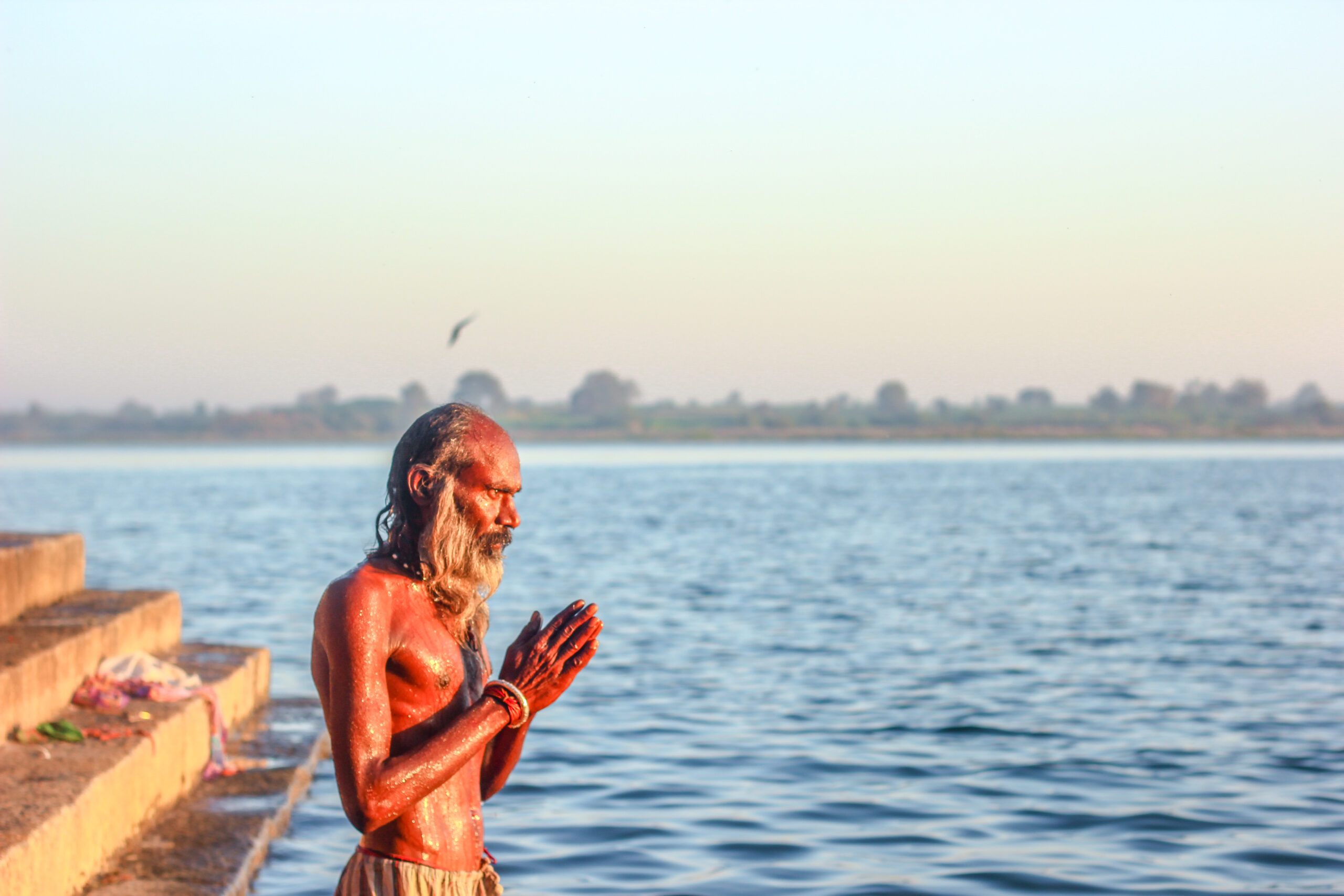
The cultural and secular celebrations
While the festival centres around these ritualistic bathings, there are countless other traditions, rituals and celebrations taking place.
The festivals mark the few occasions where the sadhus, Hindu holy men, leave their monasteries and make themselves available to the public, so many who make the pilgrimage do so to seek out spiritual guidance and instruction from them. The sadhus impart profound spiritual teachings to the gathered pilgrims, participate in philosophical discussions and offer guidance on matters of spirituality and religious practice.
Countless, colourful Kalagrams, the tent villages exhibiting native Indian art and handicrafts, sprout up throughout the festival, where visitors can admire artisanal traditions from every corner of India. The festival also holds lively spaces where attendees can see traditional classical dance and music performances unfold.
For those keen to learn more about the spiritual facets of the festival and its location, boat rides along the sacred river and guided tourist walks to the ancient temples and religious sites that lie nearby are available. Then, as the sun sets, many evenings are adorned with captivating laser light shows that paint the skies with brilliance.
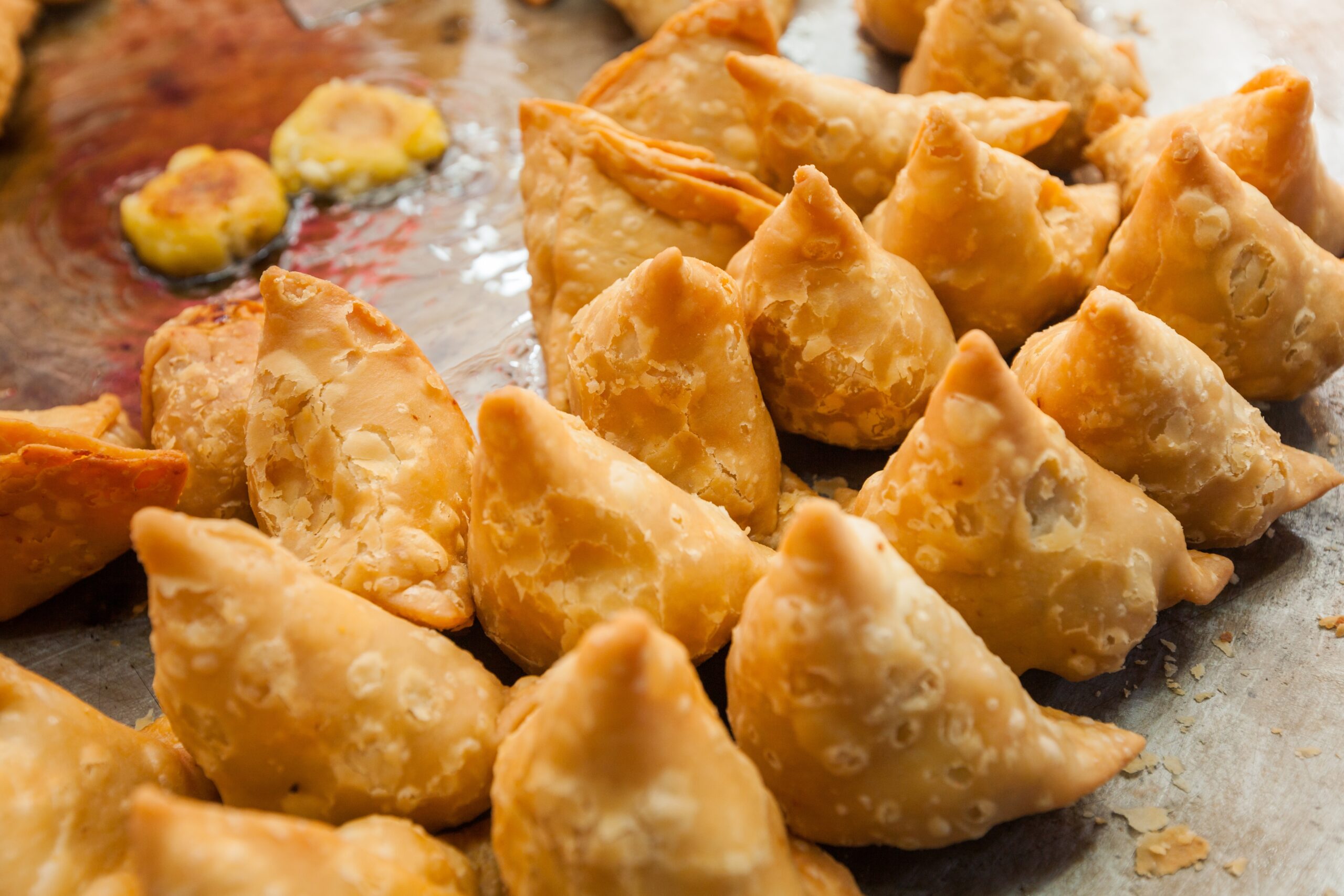
Food and drink
Celebratory feasts take place almost every day for the duration of the festival where attendees sit in rows and share a community meal called bhandara. The food is paid for by sponsors, made by volunteers and given out for free to anyone in attendance at the festival, however, it is encouraged that non-Hindu attendees offer a donation in return for any food they may eat.
Street food stalls and tents also pop up across the festival, offering delicacies from across the country, including samosas, kachoris and pakoras. Warming chai, black tea brewed with aromatic spices, such as cinnamon and cardamom, milk and sugar, is also on offer at many stalls across the festival.
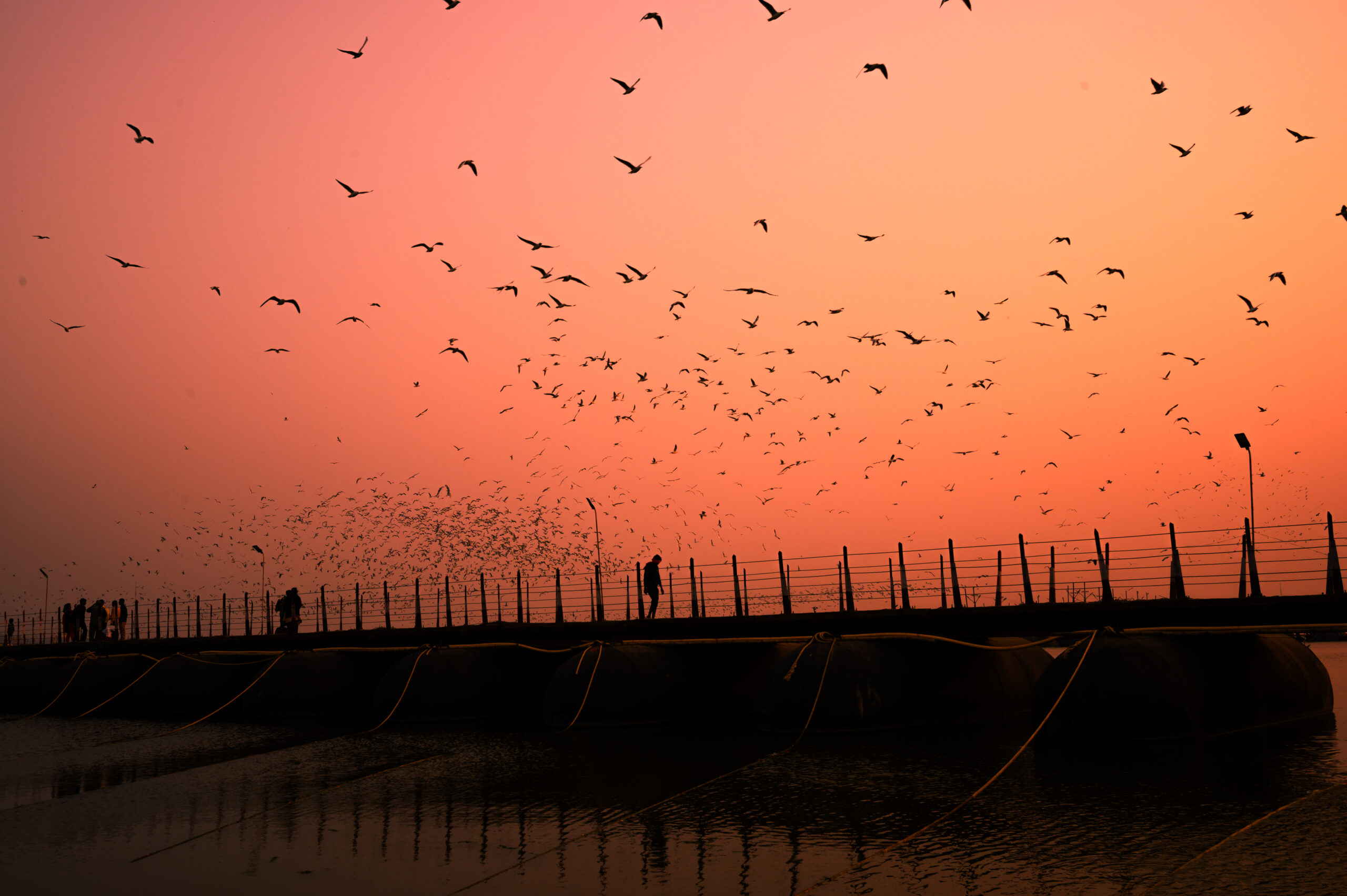
Where to stay during the Kumbh Mela
While many Kumbh Mela attendees opt for makeshift tents, that can be pitched for free, there are a plethora of tent villages available for those desiring a more comfortable experience. One excellent choice is the tents offered by TUTC. These tents provide a secure, weather-proof and eco-friendly accommodation option where guests can enjoy amenities such as 24-hour room service, running hot water and breakfast, lunch and dinner all-inclusive.
Image Credits: Kumbh Mela 2019 by Sandeep Pandit © Shutterstock; Candle offering by Swapnil Kulkarni via Unsplash; Man bathing in the Ganges river by davido bonaldo © Shutterstock; Indian Sadhu by Niks Ads © Shutterstock; Samosas by Pvince73 © Shutterstock; Kumbh pontoon bridge by Sunil_Sharma_ab © Shutterstock.
